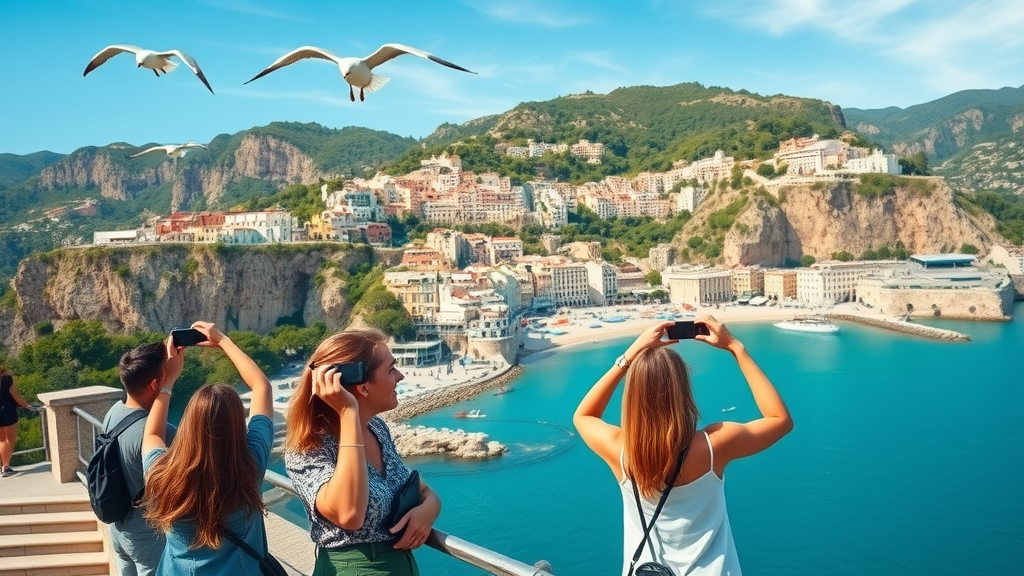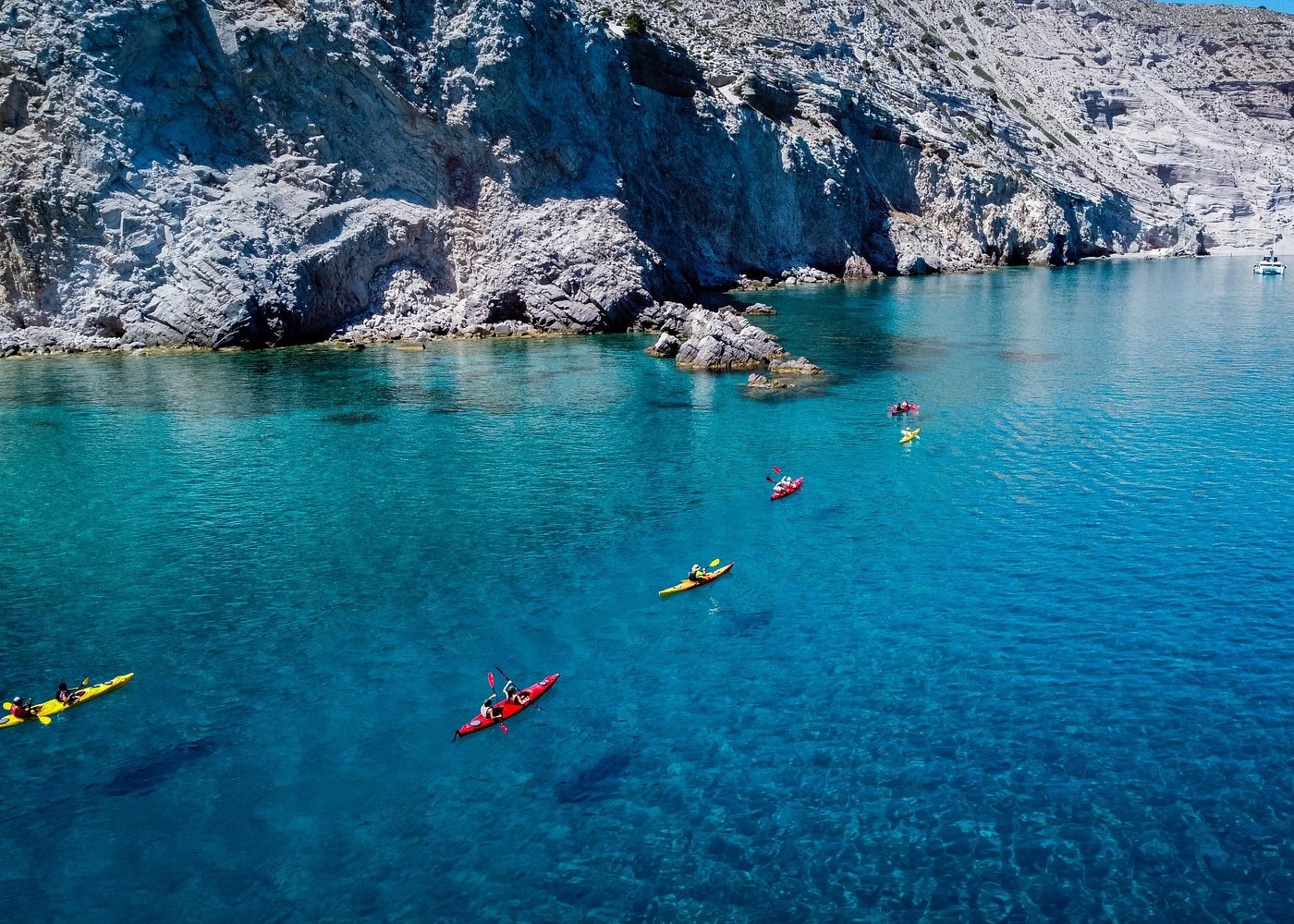Did you know? Over 90 million sport tourists are expected to descend on the United States for major sports events in the next five years—a record-breaking surge redefining both travel and the sports tourism industry. With events like the FIFA World Cup and the Olympic Games set to break attendance records, the U.S. is now the world’s number one dream destination for global sports fans. In this guide, you’ll discover the unique forces driving this trend and learn exactly which events are captivating both domestic and international travelers. A Record-Breaking Surge: The New Era of the Sport Tourist Never before has the United States witnessed such an influx of sport tourists. With the combined influence of groundbreaking mega-events and evolving trends in the travel industry, sports tourism is entering a new, record-breaking era. This phenomenon is more than just numbers—it's about passion, experience, and contribution to economic prosperity. Estimates suggest more than $12 billion will be injected into the U.S. tourism market from these mega events alone, led by diverse travelers eager to watch sport, participate actively, or experience nostalgia sport moments in iconic stadiums. Why this surge now? The expanding list of major sporting events such as the FIFA World Cup, Olympic Games, and Super Bowl has broadened the appeal for international and domestic sport tourists. Digital media, advanced stadium technology, and global travel access fuel the growing demand, while fan-focused experiences attract people across all ages. As cities race to host elite events, the economic impact is profound—not only boosting hospitality, but also leaving a legacy of sports infrastructure and community pride. For the next five years, the U.S. stands as a beacon for every type of sport tourist. What You’ll Learn About the Sport Tourist and U.S. Sports Tourism The definition and impact of sports tourism
The biggest upcoming sports events in the U.S. attracting sport tourists
How major events like the World Cup and Olympics shape sport tourism trends
Differences between types of sport tourists
Frequently asked questions and insights into the thriving sports tourism landscape Understanding the Sport Tourist: What is Sports Tourism? Sports tourism refers to the act of traveling from one location to another to watch, participate in, or celebrate a sporting event. The modern sport tourist is not restricted to spectators—you’ll find families traveling for youth sports tournaments, fans chasing the next Super Bowl, and individuals reliving history at iconic venues. This form of tourism is a substantial force in the global travel and tourism industry, generating billions annually and deeply affecting the U.S. economy. "A sport tourist is driven by passion and the pursuit of unique experiences, contributing billions to the U.S. economy annually."
— Sports Tourism Board Increasingly, people travel specifically to watch sport or participate in active sport events such as marathons, golf tournaments, and youth sports championships. From college football league games to the grandeur of international competitions, sporting events are now powerful magnets for both local visitors and global travelers, cementing the U.S. as a leader in the sports tourism market. Landscape of Sports Tourism: Key Trends Influencing the Sport Tourist Rise in international attendees at mega sporting events
Increasing popularity of nostalgia sport travel
Integration of active sport and leisure travel
Sports event technology advancements changing the spectator experience As the sports tourism industry evolves, several key trends are shaping the experience for every sport tourist. First, mega-events such as the FIFA World Cup and Olympic Games are drawing unprecedented international crowds, with many attendees planning extended travel around these events. This boosts both economic impact and cultural exchange, fostering a vibrant, united sports fan community. Second, nostalgia sport travel is surging as fans of all ages revisit classic American venues or seek to share memorable experiences with the next generation. The third major trend is the rise of active sport tourism, where travel includes both participating in and spectating at event-based activities. Lastly, sports event technology—ranging from digital ticketing and virtual stadium experiences to immersive broadcasts—creates new ways for fans and tourists to connect, ensuring every visit is more enjoyable and memorable than ever. Comparison Table of Leading U.S. Sports Events Attracting Sport Tourists Event Name
Year
Estimated Sport Tourist Attendance
Economic Impact FIFA World Cup
2026
4,000,000+
$5 Billion+ Los Angeles Olympic Games
2028
2,500,000+
$4.4 Billion+ Super Bowl (Annual)
2024-2028
150,000+ per year
$500 Million+ per year Copa America
2024
800,000+
$600 Million+ Rugby World Cup
2031
1,000,000+
$1.2 Billion+ The World Cup and Beyond: Major International Sports Events for the Sport Tourist in the U.S. The next five years see the return of globally significant events, with the United States front and center as a host. For the dedicated sport tourist, nothing compares to the spectacle and prestige of the FIFA World Cup—a landmark event that unites nations and triggers an avalanche of sport tourism. But the momentum doesn’t end there. The 2028 Los Angeles Olympic Games, the ever-expanding Copa America tournament, and preparations for the 2031 Rugby World Cup are all poised to attract vast crowds and billions in global travel spending. U.S. venues and host cities are racing to boost their infrastructure and create unforgettable fan experiences, readying for a tidal wave of people traveling to watch sport, celebrate with international fans, and explore iconic American destinations. These worldwide sporting events are more inclusive than ever, drawing not only die-hard sports fans but also families, adventure seekers, and those eager for cross-cultural moments. The effect on local economies and cultural exchange is dramatic, making this decade a golden era for the sports tourism market. How the FIFA World Cup Elevates U.S. Sport Tourism Hosting the FIFA World Cup in 2026 is nothing short of transformative for the U.S. sports tourism industry. With over four million sport tourists projected to attend, the World Cup’s economic and cultural impacts are extraordinary. Cities across the country anticipate hotel bookings at capacity, bustling restaurants and attractions, and fan zones alive with international energy. For local businesses, the event’s spending power rivals even the largest national football league or Super Bowl weekends. But the influence goes far beyond direct revenue. The World Cup shines a global spotlight on U.S. cities, introducing millions of international visitors to American hospitality and sporting culture. As a result, repeat tourism thrives, and local communities benefit from upgraded stadiums and enhanced public infrastructure. For fans—ranging from first-time attendees to veteran sports tourists—this is a once-in-a-lifetime chance to experience the world’s game, American style. Other Key International Sporting Events on the Horizon 2028 Los Angeles Olympic Games
Copa America 2024
Rugby World Cup 2031
International Tennis and Golf Majors While the World Cup draws the biggest headlines, the U.S. calendar is packed with additional international blockbusters. The 2028 Olympic Games in Los Angeles promise a multi-sport celebration, drawing top athletes and spectators from around the globe. Meanwhile, the Copa America tournament and the planning for the Rugby World Cup 2031 ensure the world’s favorite games are never far from U.S. shores. Even annual major events, such as tennis and golf championships, have grown into international spectacles for the modern sport tourist. For cities and venues, the challenge and opportunity is in catering to this diverse, global audience—offering not just entry to a sports event, but an entire cultural immersion. Add digital access, live entertainment, and social media enhancements, and you have a truly 21st-century sports tourism experience. Signature U.S. Sporting Events: Domestic Magnets for the Sport Tourist Super Bowl
NBA All-Star Game
The Masters Golf Tournament
Indianapolis 500
US Open (Golf, Tennis) While international events bring a global spotlight, signature U.S. domestic events consistently magnetize both national and international sports fans. The historic annual Super Bowl draws hundreds of thousands of event-based sport tourists, producing a festival atmosphere and delivering a massive boost to local economies. Other domestic highlights—such as the NBA All-Star Game, The Masters, Indianapolis 500, and the US Opens—transform their host cities into vibrant hubs, rich with entertainment, tradition, and the collective excitement of sports lovers. For fans, these sporting events represent an ideal combination of American culture and world-class athleticism. Participating in the celebration—whether tailgating outside a stadium or attending official events—offers unique experiences for the sport tourist. The synergy between tradition and modern spectacle ensures that every year, the U.S. calendar is packed with opportunities to watch, celebrate, and be inspired. Active Sport Events: Participatory Trends for Sport Tourists One of the most exciting trends in sport tourism is the explosion of active sport events, where travelers participate rather than just spectate. Across the United States, marathons, triathlons, cycling events, and youth sports tournaments beckon visitors who seek both adventure and achievement. For these travelers, the journey is as significant as the competition—taking part in a marathon or charity run in New York City, for example, is a life milestone, offering a sense of community and accomplishment. The integration of fitness, travel, and social connection turns every event into an immersive experience. Destinations have responded by creating event-centric travel packages that include tours, culinary highlights, and opportunities to explore iconic landmarks. Whether you are a first-time marathoner, a legacy youth sports participant, or a seasoned athlete, active sport tourism offers an unmatched connection to both place and sporting achievement. Nostalgia Sport and Heritage Tours: The Timeless Sport Tourist Experience "Nostalgia sports travel is more popular than ever, connecting generations of fans to iconic American sporting venues."
— Sports Historian Dr. Lee Turner The U.S. is a land of legendary stadiums, legendary games, and legendary moments—an irresistible draw for the nostalgia sport tourist. Nostalgia sports tourism focuses on revisiting sites where sporting history was made, from the storied bleachers of Fenway Park to the awe-inspiring halls of the NFL’s Lambeau Field. For many, walking in the footsteps of sports heroes, or sharing these places with family, becomes a pilgrimage linking past, present, and future. This type of tourism is thriving as travel packages include hall of fame tours, behind-the-scenes stadium experiences, and interactive museum visits. Both first-time visitors and lifelong fans are drawn by the promise of reliving iconic moments or celebrating the enduring legacy of their favorite teams. In an era dominated by digital media, nostalgia sport experiences are a meaningful way for fans to connect with the origins and enduring spirit of American sports. The Economic Impact: How Sport Tourists Drive the U.S. Economy Sport tourism is not just a cultural phenomenon—it’s an economic powerhouse. Each year, sport tourists inject billions into the U.S. economy through spending on travel, accommodation, food, entertainment, and ticketing. The flow of visitors for mega-events and annual sporting events provides a reliable income stream for the hospitality sector, boosts municipal tax revenues, and can fund the continued development of state-of-the-art stadiums and infrastructure. The economic impact is multiplied by the festival atmosphere created when thousands, or sometimes millions, of people travel to one city. This elevated demand benefits local businesses, attracts sponsorship, and builds lasting connections between cities and visiting sport tourists. Not only do these travelers spend more than the average tourist, but their visits often serve as introductions—turning first-time spectators into lifelong, passionate visitors and fueling the U.S. tourism industry for years to come. Types of Sport Tourists: Understanding Varieties and Motivations Active sport tourist (participants)
Event-based sport tourist (spectators)
Nostalgia sport tourist (heritage/legacy seekers) The sport tourist population is wonderfully diverse, with motivations as varied as the events themselves. Active sport tourists are participants—seeking the thrill of competition be it at marathons, triathlons, or youth sports tournaments. Event-based sport tourists are spectators, traveling to major events like the World Cup, Olympic Games, or Super Bowl, motivated by the atmosphere and excitement of the crowd. Nostalgia sport tourists are legacy seekers, drawn to the heritage and tradition found in iconic venues, museums, and hall of fame attractions. Understanding these differences is crucial for cities, event organizers, and the broader tourism market. Providing tailored experiences and targeted marketing helps drive satisfaction and encourage repeat visitation, ensuring every sport tourist’s journey is memorable and inspiring. What is a Hard Sport Tourist, and How Do They Differ? A hard sport tourist is someone who plans their entire travel itinerary around a single sporting event, with the main purpose being to watch sport, participate, or immerse over multiple days. These tourists are highly engaged, often traveling long distances, spending more per trip, and showing deep loyalty to teams or events. In contrast, a soft sport tourist may combine sport tourism with general sightseeing or vacation activities. Event organizers and cities benefit immensely from hard sport tourists, as their enthusiasm transforms the energy of the event and strengthens the global network of sports fans. Knowing how to engage both hard and soft sport tourists is key to maximizing the economic impact and legacy of each major sports event. FAQs: Sport Tourist & Sports Tourism Essentials What is the meaning of sport tourism?
What is an example of sports tourism?
What are the three types of sport tourism?
What is a hard sport tourist? What is the meaning of sport tourism? Sport tourism is a specific type of tourism that involves traveling to another location mainly to watch or participate in a sporting event. This form of tourism covers everything from attending global games like the World Cup or Olympic Games to participating in marathons or youth sports tournaments. It is a growing part of the tourism industry, merging travel and sports as a unified experience. What is an example of sports tourism? A great example of sports tourism is traveling to the United States to attend the Super Bowl or the FIFA World Cup. Fans may book tickets, arrange accommodations, and explore host cities—all motivated by their desire to watch sport, celebrate with fellow fans, and enjoy the festive atmosphere surrounding these major sporting events. Whether it’s the NBA All-Star Game or The Masters Golf Tournament, every such trip is a sports tourism experience. What are the three types of sport tourism? The three primary types of sport tourism include: active sport tourism, where travelers participate in events like marathons or triathlons; event-based sport tourism, where fans attend major sporting events as spectators; and nostalgia sport tourism, which involves visiting heritage sites, historic stadiums, or sporting museums. Each offers a unique lens through which to experience the rich world of sports and travel. What is a hard sport tourist? A hard sport tourist is a person whose main travel goal is focused exclusively on sports—attending or participating in a specific event, often planning the entire trip around that occasion. They differ from soft sport tourists in their intensity, commitment, and willingness to invest in the full experience, including merchandise, VIP tickets, and exclusive stadium tours. Key Takeaways: Preparing for the Ultimate Sport Tourist Experience The U.S. is a premier destination for international and domestic sport tourists
Major upcoming events will massively shape the landscape of sports tourism
Understanding the motivation and impact of different sport tourists helps cities and businesses adapt
The sport tourist contributes significant economic, cultural, and communal benefits As you plan your next travel adventure, keep in mind the transformative power of sports events—not only for fans, but for communities, economies, and cultural exchanges. The next five years mark an incredible opportunity to experience and participate in the biggest sports tourism experiences the United States has ever offered. Conclusion: Embracing the Future of Sports Tourism and the Sport Tourist in the U.S. With a packed schedule of iconic events, a thriving sports tourism market, and ever-increasing global travel, the United States stands ready to welcome every sport tourist to a new era of unforgettable experiences and memories.


 Add Row
Add Row  Add
Add 




Write A Comment